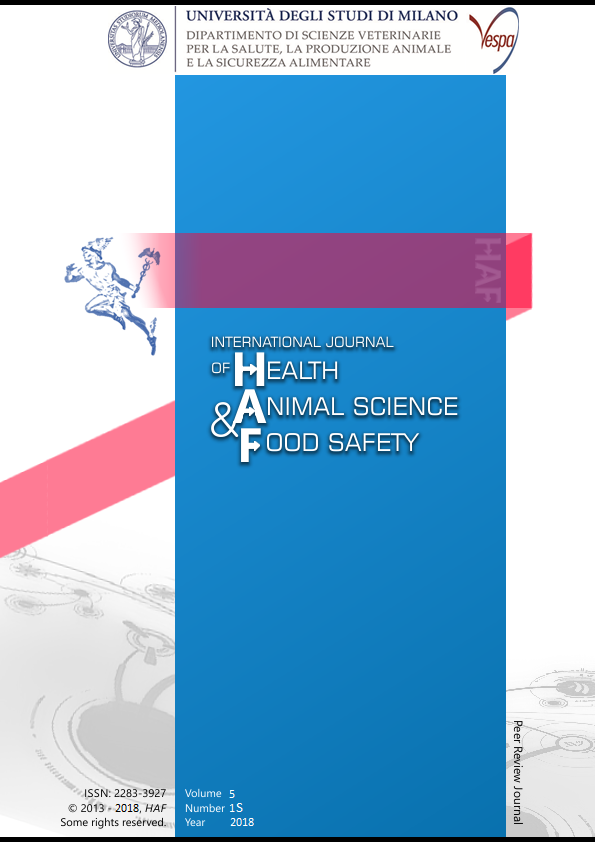Abstract
Feline infectious peritonitis (FIP) is a fatal disease in which the definitive diagnosis is achieved by immunohistochemistry (IHC) on post-mortem biopsies. The clinical suspicion is aroused by signalment, clinical signs and several laboratory tests, including alpha-1-acid glycoprotein measurement for which the only validated kit is no longer available. Paraoxonase-1 (PON-1) is a serum enzyme with antioxidant activity, considered as a negative acute phase protein in several species. Since inflammation plays a major role in FIP, and due to the high susceptibility of cats to oxidation, it could be of great interest the evaluation of this enzyme as a diagnostic marker for FIP. The aim of this study was to measure paraoxonase-1 in healthy cats and cats with clinical signs consistent with FIP (both wet or dry form), in order to evaluate the utility of this parameter in the diagnosis of FIP. Sixty-two cats were enrolled and divided into three groups: healthy (n=16), confirmed FIP (n=22) and NON FIP with similar clinical signs (n=24). PON-1 was measured on serum, using a paraoxon-based enzymatic method, already validated in cats. Results showed significantly lower PON-1 activity in FIP cats (mean ± SD: 29.1 ± 16.3 U/mL; median: 24.4; IQR: 16.6-38.3), compared with healthy cats (90.1 ± 24.1 U/mL; median: 86.0; IQR: 76.7-105.7; P<0.001) and with “non-FIP” cats (55.9 ± 28.3 U/mL; median: 51.9; IQR: 35.7-68.8, P<0.001). A significant difference was also found between healthy and “non-FIP” cats (P<0.001). The receiver operating characteristic (ROC) curve demonstrated that PON-1 may discriminate cats with and without FIP (Fig.1). At the cut-off that maximizes the diagnostic power of the test, sensitivity and specificity for FIP were 77% each, suggesting that PON-1 may be a reliable marker in association with other confirmatory tests and with signs consistent with the disease.Riferimenti bibliografici
Novak F., Vavrova L., Kodydkova J., Novak F.Sr., Hynkova M., Zak A., Novakova O., 2010. Decreased paraoxonase activity in critically ill patients with sepsis. Clinical and Experimental Medicine. 10(1), 21-25
Paltrinieri S., Giordano A., Tranquillo V., Guazzetti S., 2007. Critical assessment of the diagnostic value of feline alpha1-acid glycoprotein for feline infectious peritonitis using the likelihood ratios approach. Journal of Veterinary Diagnostic Investigation. 19(3), 266-272
Pedersen N.C. , 2014. An update on feline infectious peritonitis: Diagnostics and therapeutics. The Veterinary Journal. 201, 133-141
Rossi G., Giordano A., Costarelli E., Moretti P., Paltrinieri S., 2014. Analytical validation of a paraoxon-based method to measure the activity of paraoxonase-1 in feline serum. 2014. ACVP and ASVCP annual meeting, Atlanta, Nov 8th-12th, 2014. Published in: Veterinary Clinical Pathology, 43:E18
Tecles F., Caldín M., Tvarijonaviciute A., Escribano D., Martínez-Subiela S., Cerón J.J., 2015. Serum biomarkers of oxidative stress in cats with feline infectious peritonitis. Research in Veterinary Science. 100, 12-17
This work is licensed under a CC BY-SA 4.0 international

